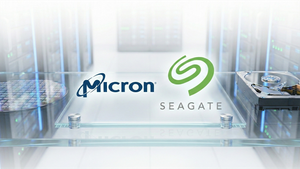 Photo from Unsplash
Photo from Unsplash
Originally Posted On: https://nfina.com/what-is-vdi/
What is VDI (Virtual Desktop Infrastructure)?
Welcome to the world of VDI – Virtual Desktop Infrastructure! If you’ve ever found yourself wondering about the magic behind remote work, flexible computing, and seamless collaboration across devices, then you’re in for a treat. In this blog post, we’ll be diving deep into the basics of VDI, exploring what it is, how it works, and why it’s revolutionizing the way we think about desktop computing.
What is VDI?
Virtual Desktop Infrastructure (VDI) is a powerful technology that allows businesses and organizations to deploy and manage virtual desktops for their employees. It provides an alternative to the traditional method of having physical desktop computers, making it more efficient, cost-effective, and flexible.
In simpler terms, VDI is a method of hosting multiple operating systems on a single server or remote computer. Instead of having individual desktops physically installed on each employee’s device, they can access their own virtual desktop from any device with an internet connection.
The concept of VDI dates to a computer conference in San Francisco on December 9, 1968. Using NLS (On-line System), the presenter and a colleague (back in Menlo Park) worked on a shared document in one window (using keyboard and mouse input devices) while at the same time conducting the world’s first public computer video conferences in another window. After 1968, It gained significantly more traction in the 2000’s and recent years with the advancements in cloud computing and virtualization technologies.
The Basics of VDI (Virtual Desktop)
There are three main components of a VDI system: the client device or endpoint, the virtualization software, and the centralized server infrastructure. Let’s take a closer look at each one:
- Client Device/Endpoint: This refers to any device that a user will use to access their virtual desktop. It can be a laptop, tablet, thin client or even a smartphone. The client device needs minimal hardware requirements as most processing is done on the server side.
- Virtualization Software: The heart of any VDI system is its virtualization software which creates and manages multiple virtual machines (VMs). These VMs act as independent instances of operating systems that run on top of the hypervisor software installed on the centralized server infrastructure.
- Centralized Server Infrastructure: This component consists of servers that host multiple VMs using hypervisor software like VMware vSphere or Citrix XenServer. These servers run multiple instances of operating systems simultaneously providing users with individualized access to their virtual desktops.
How Virtualization Works
In the context of desktop infrastructure, virtualization enables user desktop environments to be created and managed from a central location rather than on individual physical devices. This concept is known as Virtual Desktop Infrastructure (VDI). With VDI, users can access their personalized virtual desktops from any device with an internet connection, whether it’s a traditional PC or a mobile device.
So how does VDI work? The process begins with the creation of virtual machines (VMs) using specialized software known as hypervisors. These hypervisors act as the intermediaries between the physical server and the virtual machines that are running on it. They allow for efficient resource allocation and management so that each VM receives only what it needs without impacting others.
Once the VMs are set up, they can then be assigned to specific users or groups within an organization. This allows for personalized virtual desktop environments that can include applications, files, and settings unique to each user. The users can then access their designated VM by logging in through a client application which connects them to their allocated VM over the network.
One critical aspect of a virtual desktop server is its ability to provide users with consistent performance regardless of their location or device being used. Since all computing processes are happening centrally on powerful servers rather than individual endpoints, even older or low-power devices can feel fast and responsive when accessing a VDI solution.
Additionally, VDI offers some significant advantages for IT departments responsible for managing these systems. Centralized management allows for easier updates and maintenance across multiple VMs compared to traditional desktop setups where updates must be done manually on each individual device. This not only saves time and resources but also ensures consistency and security across the entire VDI environment.
Types of VDI Software
In this section, we will explore the various types of software used in VDI and how they work.
- Hypervisor: The hypervisor or virtual machine monitor (VMM) is at the core of any VDI deployment. It is responsible for creating and managing multiple virtual machines (VMs) on a single physical server. VMs act as independent operating systems, allowing multiple users to access their own personalized desktop environments concurrently. The hypervisor allocates resources such as CPU, memory, and storage to each VM, ensuring optimal performance.
- Connection Broker: The connection broker acts as an intermediary between users and their assigned virtual desktops. It authenticates users’ credentials during login and then connects them to their respective VM based on pre-defined policies by the administrator. Additionally, the connection broker also monitors resource usage, load balancing, and optimizes connections for better user experience.
- Virtual Desktop Manager: The Virtual Desktop Manager (VDM) is responsible for creating and managing VM templates or golden images from which all other VMs are created. It makes sure that all VMs are consistent in terms of configurations and settings so that they function smoothly across all devices.
- Client Software: Client software provides end-users with remote access to their virtual desktops through any device with internet connectivity such as laptops, tablets or smartphones. These clients have built-in protocols that facilitate low-latency communication between client devices and the server hosting the hypervisor.
- Remote Display Protocol: A remote display protocol creates compressed video streams transmitted from the server running the hypervisor to client devices over TCP/IP networks allowing real-time session transfers plus high graphics fidelity. Examples of remote display protocol include PC-over-IP (PCoIP), Microsoft Remote Desktop Protocol (RDP), and VMware Blast Extreme.
- Storage Virtualization Software: Storage virtualization software is responsible for managing storage resources effectively in VDI deployments. This software works by pooling storage resources from different devices such as hard drives or solid-state drives to create a centralized data store that can be allocated to various VMs on-demand.
Pros and Cons of VDI
Virtual Desktop Infrastructure (VDI) offers a range of benefits and drawbacks for organizations considering implementing this technology. One major advantage of VDI is its ability to centralize desktop management, making it easier for IT administrators to deploy updates and patches across all virtual desktops simultaneously. This can result in significant time and cost savings compared to managing individual physical desktops. Additionally, VDI allows employees to access their virtual desktop from any device with an internet connection, increasing flexibility and productivity.
On the other hand, one notable disadvantage of VDI is the initial investment required to set up the infrastructure and software necessary for deployment. Organizations must also consider factors such as network bandwidth requirements and potential performance issues that may arise when multiple users are accessing virtual desktops at once.
Alternatives of VDI with Nfina
Virtual Desktop Infrastructure (VDI) has long been a popular choice for organizations looking to centralize desktop management and provide remote access to employees. However, there are alternatives to VDI that offer different benefits. One such alternative is hybrid cloud solutions, which combine the scalability and flexibility of the cloud with the security and control of on-premises infrastructure. By using a combination of public and private clouds, organizations can tailor their desktop environments to meet specific needs while also taking advantage of cost savings and simplified management.
Another alternative to VDI is deploying dedicated tower workstations for users who require high-performance computing capabilities. Workstations offer more power than traditional desktops or laptops, making them ideal for graphic design, engineering, or other resource-intensive tasks. By providing each user with their own workstation, organizations can ensure consistent performance without having to worry about sharing resources with other users.
Finally, another alternative to VDI is leveraging rackmount server options that allow users to access applications from a centralized server rather than virtualizing entire desktop environments. This approach reduces hardware costs and simplifies management while still providing users with the ability to work remotely.
Overall, while VDI access remains a popular solution for many organizations, there are several alternatives available that may better suit specific needs or budget constraints. Hybrid cloud solutions offered by NFINA increase scalability and flexibility, dedicated workstations provide high-performance computing capabilities, and server-based computing simplifies management while still allowing for remote access. Organizations should carefully evaluate these alternatives before deciding on the best solution for their unique requirements.




